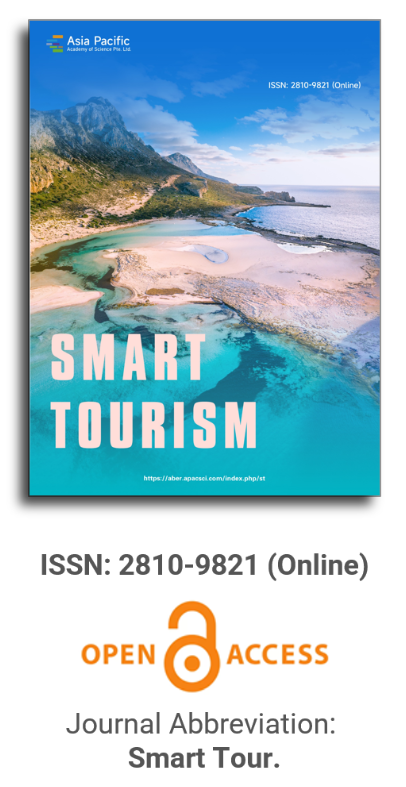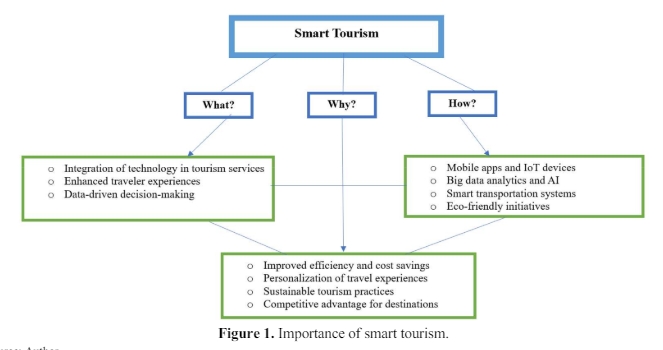


The relationship between age and stress during the pandemic in Ecuador—Tourism strategy recommendations
Vol 3, Issue 2, 2022
Download PDF
Abstract
The objective of this work was to analyze the correlation between stress in times of pandemic and the age of people, through inferential statistics in order to propose tourism strategies. The study variables were: stress level and age. The sample consisted of 4220 people from 19 provinces of Ecuador. A questionnaire was applied in google forms using the survey technique. The statistical analysis of the data was carried out using the SPSS version 23 statistical program and the corresponding non-parametric statistical test “Spearman’s Correlation”, with a confidence level of 95% and a significance level of 5%. It was concluded that those most affected in terms of stress are people between 19 and 28 years of age and that tourism should be developed with an anti-stress approach to demand on a constant basis.
Keywords
References
- OPS. Organización Panamericana de la Salud [In-ternet]. 2020. Available from: https://www.paho.org/en/tag/enfermedad-por-coronavirus-covid-19.
- Dalles LP. EL TURISMO II (Spanish) [TOURISM II]. 2012. Available from: http://www.abc.com.py/edicion-impresa/suplementos/escolar/el-turismo-ii–471163.html.
- Pizzagalli DA. Depression, stress, and anhedonia: Toward a synthesis and integrated model. Annual Review of Clinical Psychology 2014; 10: 393–423.
- García NB, Zea RM. Estrés académico (Spanish) [Academic stress]. Revista de psicología Universi-dad de Antioquia 2011; 3(2): 55–82.
- EROSKI Foundation. Eroski consumer. 2020. Available from: https://www.consumer.es/salud/problemas-de-salud/se-puede-medir-nivel-estres.html.
- Chadi G, Abdallah LA. The neurobiology and pharmacotherapy of posttraumatic stress disorder. Annual Review of Pharmacology and Toxicology 2019; 171–189.
- UNWTO. United Nations World Tourism Organiza-tion [Internet]. 2020. Available from: https://www.unwto.org/en.
- Muñoz AI. Relational analysis of tourism systems. An alternative framework in the tourism planning process. Tourism & Management Studies 2012; 8: 55–64.
- Luiz EM. Tourism from Argentina in Uruguay: A quantitative behavioral analysis. Cuadernos de Turismo 2020; 239–264.
- Fonseca MHZ. Tourism and consumption of urban space in Barcelona. Analysis of the resident-tourist relationship in La Barceloneta neighborhood. Cuadernos de Turismo 2019; 487–514.
- Duque DG. The impacts of tourism in Spain: Dif-ferences between sun and beach destinations and inland destinations. Cuadernos de Turismo 2019; 325–347.
- Institute of Psychotherapy & Psychosomatic Re-search. Stress test [Internet]. 2020. Available from: www.psicoter.es.
- Instituto Superior de Ciencias Médicas de la Hbana. El coeficiente de correlacion de los rangos de spearman (Spanish) [Spearman’s rank correlation coefficient]. Revista Habanera de Ciencias Médicas 2009.
- Rodríguez RM, Fernández JI. Desarrollo turístico y dinámica relacional. Metodología de análisis para la gestión activa de destinos turísticos (Spanish) [Tourism development and relational dynamics. Methodology of analysis for the active management of tourist destinations]. Cuadernos de turismo 2009; (23): 173–94.
Supporting Agencies
Copyright (c) 2022 Manuel Antonio Abarca Zaquinaula, Matius Rodolfo Mendoza Poma, Freddy Anaximandro Alvarez Lema, Milton Alberto Sampedro Arrieta
License URL: https://creativecommons.org/licenses/by/4.0

This site is licensed under a Creative Commons Attribution 4.0 International License (CC BY 4.0).

Prof. Hung-Che Wu
Nanfang College, Guangzhou
China
Indexing & Archiving
Asia Pacific Academy of Science Pte. Ltd. (APACSCI) specializes in international journal publishing. APACSCI adopts the open access publishing model and provides an important communication bridge for academic groups whose interest fields include engineering, technology, medicine, computer, mathematics, agriculture and forestry, and environment.



.jpg)
.jpg)

.jpg)

